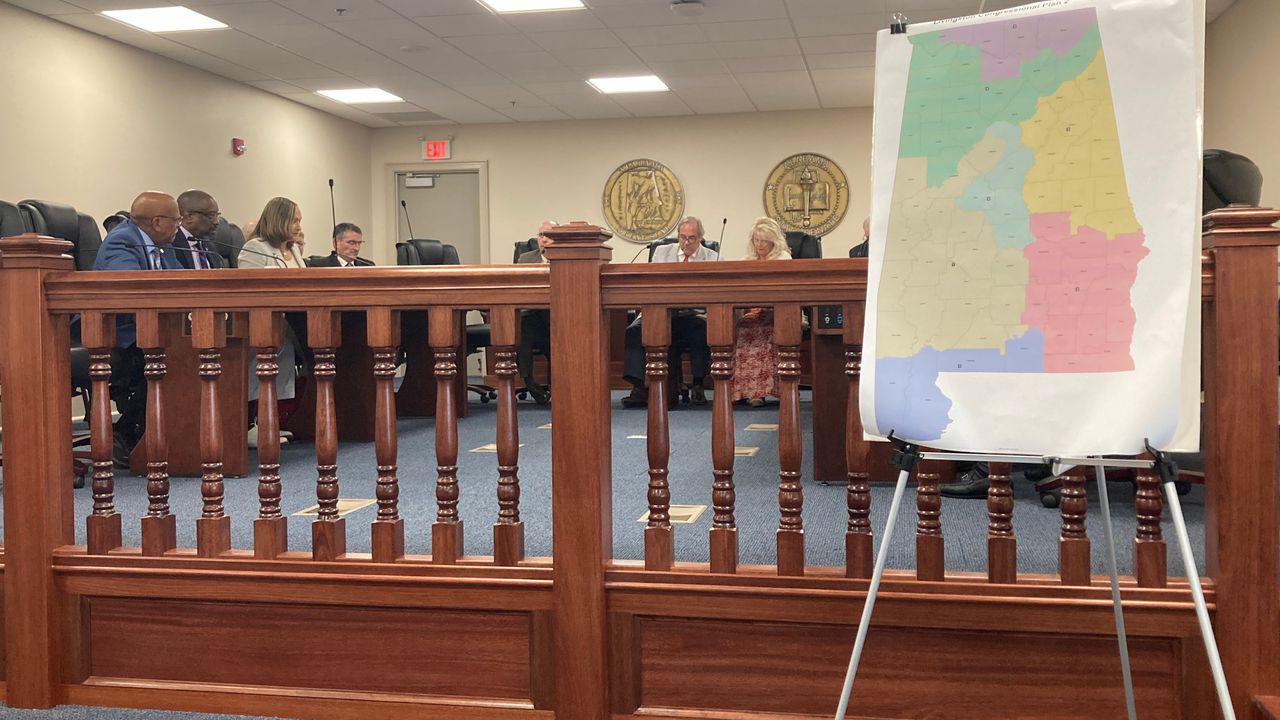Department of Justice weighs in on Alabama redistricting case
The U.S. Department of Justice on Friday filed a statement of interest in Alabama’s congressional redistricting case, saying the court should use an analysis of historical election patterns and other factors to determine if the new map passed by the Legislature complies with the Voting Rights Act.
Friday was the deadline set by a three-judge district court for parties in the litigation to file objections to the new map, passed last Friday during a special session.
Kristen Clarke, assistant attorney general for civil rights for the DOJ, and U.S. Attorney Prim Escalona of the Northern District of Alabama, filed the motion.
“Congress has explicitly vested the Attorney General with authority to enforce Section 2 on behalf of the United States,” the statement says. “Accordingly, the United States has a substantial interest in ensuring the proper application of Section 2. The United States expresses no view on any factual disputes before the Court, nor on any legal questions other than those related to applying Section 2 to the proposed remedy in this case.”
In June, the U.S. Supreme Court upheld the ruling of a three-judge district court that Alabama’s congressional map approved in 2021 and used in last year’s elections most likely violated the Voting Rights Act by diluting the influence of Black voters. Only one of seven districts had a majority Black population, while one-fourth of Alabama residents are Black.
The Voting Rights Act does not guarantee a minority group representation in proportion to its share of the population. But the district court found, and the Supreme Court agreed, that other factors, including that Alabama’s Black population is large enough and geographically compact enough for a reasonably drawn second majority district, and that voting in Alabama is racially polarized, weighed in favor of a likely violation of the Voting Rights Act.
The new plan approved by the Republican majority in the Legislature leaves District 7 in west Alabama as the only majority Black district, with a Black voting age population of 51%, down from 56% under the 2021 plan. The new plan raises the Black voting age population in District 2 in southeast Alabama from 30% to 40%. Republican lawmakers said that would create a second district where Black voters had an opportunity to elect a candidate of their choice, which the court said was needed to fix the likely Voting Rights violation.
Democrats opposed the plan and said they would rely on the court to reject the map and draw its own plan.
The DOJ, in its statement of interest, said a functional analysis is needed to determine whether the redraw District 2 with a 40% Black voting age population would give Black voters a realistic chance to elect a candidate of their choice. The DOJ said factors to consider include voting-age population, voter registration, political cohesion, bloc voting, historical election patterns, and others.
“As the ability to analyze districts’ electoral performance has become more sophisticated, the Department of Justice has relied on functional analyses to determine whether a remedy will provide minority voters with the opportunity to elect candidates of their choice,” the DOJ said.
On Thursday, the plaintiffs group led by Senate Minority Leader Bobby Singleton, D-Greensboro, filed their objection to the new map. The Singleton plaintiffs suggested a map that would make District 6 in central Alabama, which would include all of Jefferson County, the second opportunity district for Black voters.
The redrawn District 6 would only have a Black voting age population of 40%. But Democratic candidates have received more votes than Republican candidates in the proposed district in most of the elections since 2012, the Singleton plaintiffs said.
There are two other plaintiff groups that supported a different plan during the special session. They are also expected to file their objections on Friday.
The three-judge district court, which includes two President Trump appointees, will begin a hearing in the case on August 14. If the court rules against the Legislature’s new plan, it is expected to draw the new map to be used in next year’s elections.
Read more: Could Democrats win in Alabama congressional district that is 40% Black?
